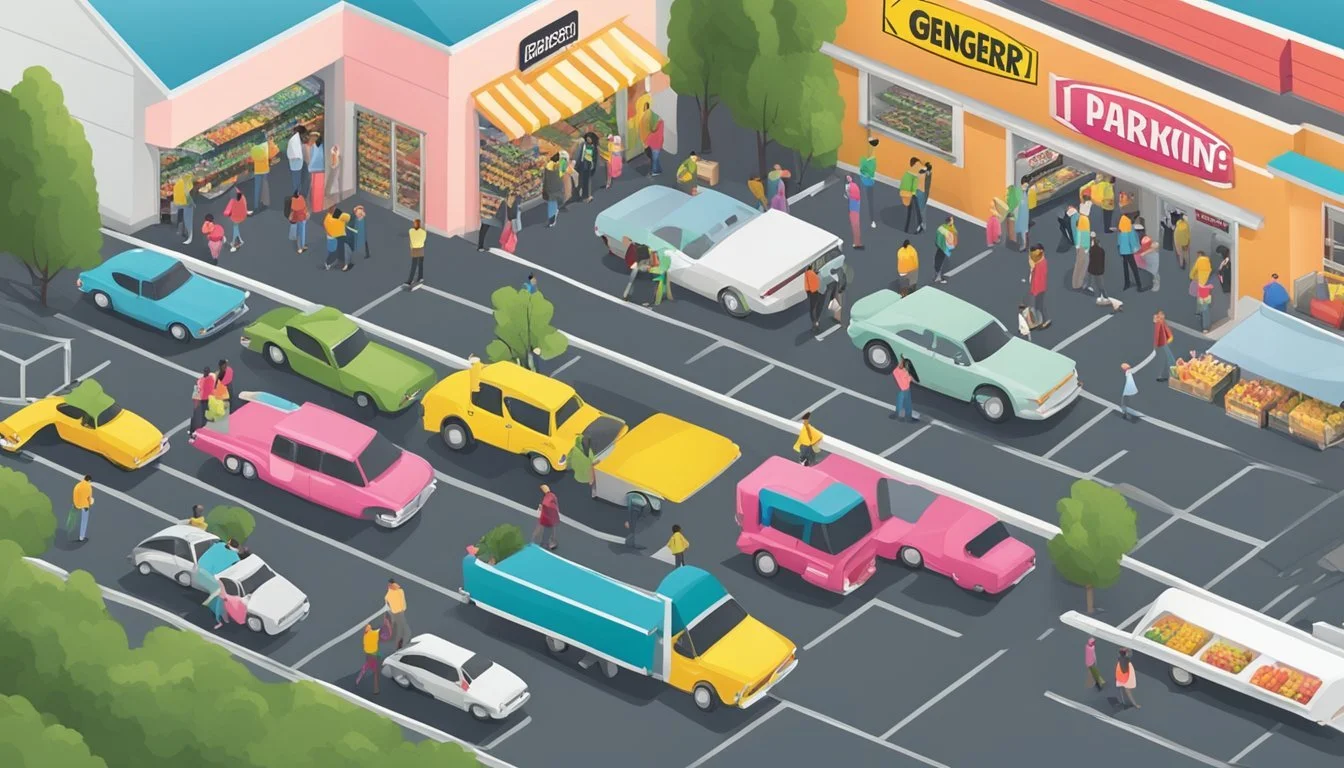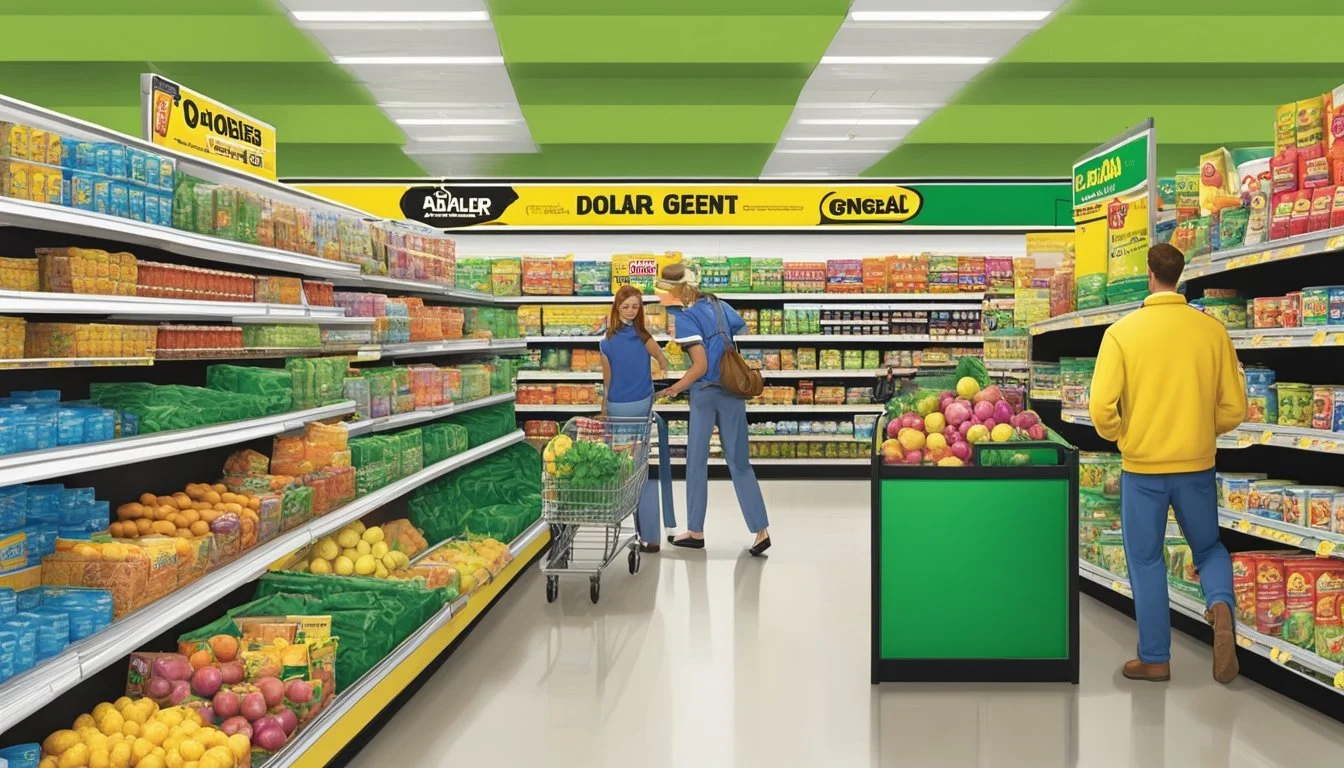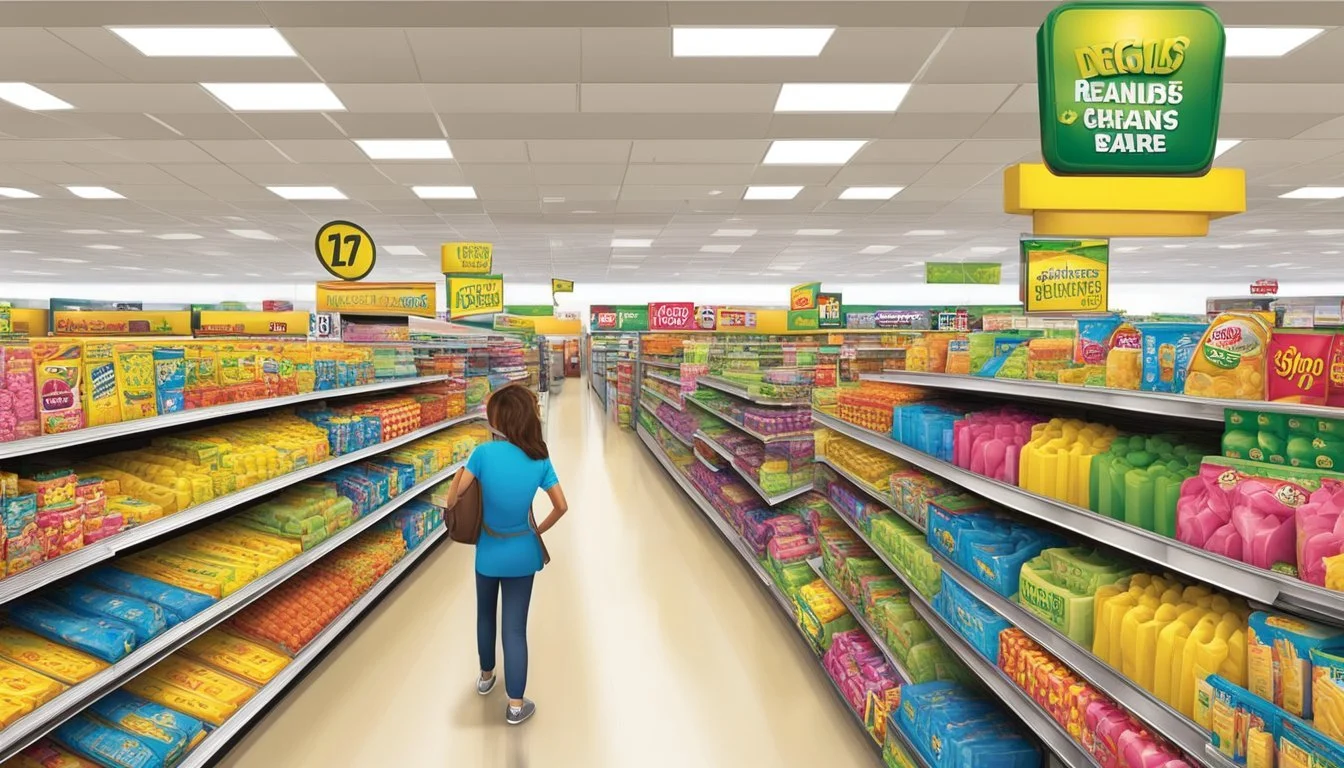Dollar General vs Piggly Wiggly
A Comprehensive Comparison of Budget Shopping Options
Dollar General and Piggly Wiggly represent two distinct approaches to grocery shopping in America. These retailers cater to different consumer needs and preferences, each with its own unique strengths and weaknesses.
Dollar General focuses on offering a wide range of products at discounted prices, attracting budget-conscious shoppers. The chain has expanded rapidly across the United States, providing accessible shopping options in many rural and urban areas. While Dollar General offers convenience and competitive pricing, it may not provide the same variety of fresh produce and specialty items found in traditional supermarkets.
Piggly Wiggly, known for its historical significance in the grocery industry, takes a more localized approach. The chain often tailors its offerings to regional tastes and preferences, creating a more personalized shopping experience. Piggly Wiggly stores typically feature a smaller footprint compared to large supermarket chains, which can result in a more intimate atmosphere for customers.
History and Evolution of Grocery Shopping
The evolution of grocery shopping transformed how consumers purchase food and household goods. Two key players, Piggly Wiggly and Dollar General, played significant roles in shaping the modern retail landscape.
The Roots of Piggly Wiggly
Clarence Saunders revolutionized grocery shopping when he opened the first Piggly Wiggly store in Memphis, Tennessee on September 6, 1916. This innovative concept introduced self-service shopping, allowing customers to select their own items from shelves.
Prior to Piggly Wiggly, shoppers relied on clerks to retrieve products from behind counters. Saunders' model increased efficiency and reduced costs. The store featured individual item pricing, checkout stands, and shopping baskets - all novel concepts at the time.
Piggly Wiggly's success led to rapid expansion. By 1922, the chain had grown to over 1,200 stores across the United States. This self-service model became the foundation for modern supermarkets, forever changing how people shop for groceries.
Dollar General's Journey
Dollar General's history began in 1939 when J.L. Turner and his son Cal opened J.L. Turner and Son Wholesale in Scottsville, Kentucky. The company initially focused on closeouts and excess inventory from manufacturers.
In 1955, the Turners converted their wholesale business into a retail operation, rebranding as Dollar General. They adopted a simple pricing strategy: no item in the store would cost more than one dollar.
Over the decades, Dollar General expanded its product offerings and pricing structure. The company grew steadily, targeting rural and underserved communities. By the 1990s, Dollar General had become a major player in the discount retail sector.
Today, Dollar General operates thousands of stores across the United States, providing affordable groceries and household items to millions of customers.
Comparison of Store Strategies
Dollar General and Piggly Wiggly employ distinct approaches to capture market share and serve customers in the competitive grocery landscape. Their contrasting business models and operational strategies shape their positioning and impact in the retail sector.
Business Models and Market Impact
Dollar General operates as a discount retailer, offering a mix of groceries and general merchandise at low prices. The company focuses on small-format stores in rural and suburban areas, often serving communities with limited shopping options. This strategy allows Dollar General to fill gaps in the market where larger supermarkets may not be present.
Piggly Wiggly, on the other hand, pioneered the self-service grocery model. Its stores typically offer a more traditional supermarket experience with a wider range of fresh produce and grocery items. Piggly Wiggly stores are often found in smaller towns and cities, competing with regional chains and independents.
Both chains aim to leverage economies of scale, but in different ways. Dollar General's vast network of over 17,000 stores enables bulk purchasing power. Piggly Wiggly's model relies on collective buying through its franchise system to achieve competitive pricing.
Franchise Vs. Chain Approaches
Dollar General operates as a corporate-owned chain, maintaining direct control over its stores and operations. This centralized approach allows for consistent branding, pricing, and product selection across locations. It also enables rapid expansion and implementation of company-wide initiatives.
Piggly Wiggly utilizes a franchise model, where individual store owners operate under the Piggly Wiggly brand. This structure allows for local adaptation and community engagement. Franchisees can tailor their product mix and services to local preferences while benefiting from the brand recognition and support systems of Piggly Wiggly.
The franchise approach offers Piggly Wiggly the ability to expand with lower corporate capital investment. It also fosters entrepreneurship in local communities. Dollar General's corporate model, in contrast, provides tighter control over store operations and allows for faster decision-making and implementation of new strategies.
Store Layout and Design Insights
Store layout and design play crucial roles in shaping the shopping experience. Both Piggly Wiggly and Dollar General employ distinct strategies to organize their spaces and guide customers through their stores.
Navigating Piggly Wiggly's Aisles
Piggly Wiggly typically adopts a grid layout, arranging products in parallel aisles. This traditional design allows for efficient use of space and easy navigation. Essential items like bread, milk, and eggs are often placed at the store's periphery.
This strategy encourages customers to traverse multiple sections, increasing the likelihood of additional purchases. Piggly Wiggly's layout emphasizes product visibility and accessibility.
The store maintains wide aisles to accommodate shopping carts and facilitate smooth traffic flow. Clear signage helps shoppers locate specific departments and product categories quickly.
Dollar General's Floor Plan
Dollar General employs a more compact layout, designed for quick shopping trips. The store utilizes a mix of grid and loop layouts, creating a circular flow that guides customers through various merchandise sections.
High-demand items are strategically placed throughout the store, prompting impulse purchases. Dollar General's produce section, when present, is typically located near the entrance to create a fresh, inviting atmosphere.
The store's layout maximizes product display in a limited space. Shelving units are often taller than those in traditional grocery stores, allowing for vertical product presentation.
Dollar General's design prioritizes efficiency, enabling customers to quickly find and purchase essential items while also encouraging browsing of promotional displays.
Range and Quality of Products
Dollar General and Piggly Wiggly offer distinct product selections and quality levels. Their offerings cater to different customer needs and preferences, with variations in fresh produce, meats, and store-brand items.
Freshness of Produce and Meats
Dollar General typically stocks a limited selection of fresh produce and meats. The focus is more on packaged and shelf-stable items. Fresh vegetables and fruits may be available but in smaller quantities.
Piggly Wiggly, on the other hand, emphasizes fresh produce and quality meats. Their stores usually feature larger produce sections with a variety of fruits and vegetables. The meat department often includes a butcher counter with custom cuts.
Quality can vary between locations for both chains. Piggly Wiggly generally maintains higher standards for freshness in their perishable goods.
Availability of Store Brands and Specialties
Dollar General offers a range of private-label products under brands like DG Home and Clover Valley. These items span categories such as snacks, cleaning supplies, and personal care products.
Piggly Wiggly also provides store-brand options, often at competitive prices. Their selection includes both everyday staples and some specialty items unique to the chain.
Both stores stock national brands, but Piggly Wiggly typically offers a wider variety. Dollar General focuses on popular, fast-moving products.
Piggly Wiggly may carry more regional specialties and local products, catering to community tastes. Dollar General's inventory is more standardized across locations.
Cost Analysis and Pricing Structures
Dollar General and Piggly Wiggly employ distinct pricing strategies to attract customers and maintain competitiveness in the grocery market. Both stores aim to offer value, but their approaches differ in key ways.
Dollar General's Discount Pricing
Dollar General's pricing model centers on offering products at $1 or less. This strategy appeals to budget-conscious shoppers seeking everyday essentials at low prices. The store stocks a mix of national brands and private label items, often in smaller package sizes to maintain the $1 price point.
Dollar General frequently runs promotions and offers digital coupons to further reduce prices. Their "DG Digital Coupons" program allows customers to save additional money on select items. The company's bulk purchasing power enables them to negotiate lower costs from suppliers, passing some savings to consumers.
Piggly Wiggly's Competitive Pricing
Piggly Wiggly adopts a more traditional grocery pricing structure. They offer a wider range of price points across various product categories. The store focuses on providing competitive prices on both national brands and their own private label products.
Piggly Wiggly's pricing strategy often includes weekly sales and promotions. They use loyalty programs and personalized discounts to incentivize repeat customers. The store's smaller size and regional focus allow for more flexibility in adjusting prices to local market conditions.
Piggly Wiggly emphasizes value through quality rather than solely focusing on the lowest prices. They may offer larger package sizes or bulk options for additional savings.
Shopping Experience and Customer Service
Dollar General and Piggly Wiggly offer distinct shopping experiences. Both stores emphasize convenience and community engagement, but differ in their approaches to customer service and local involvement.
Convenience and Checkout Options
Dollar General prioritizes quick, no-frills shopping. Stores are typically smaller, with a streamlined layout designed for easy navigation. Checkout lines are often short due to the focus on grab-and-go items.
Piggly Wiggly, as the original self-service grocery store, pioneered the modern shopping experience. Customers can browse freely, selecting their own items from shelves. Many locations offer self-checkout options to reduce wait times.
Both chains have embraced technology to enhance convenience. Dollar General's app provides digital coupons and allows for easy list-making. Piggly Wiggly offers online ordering with curbside pickup at select stores.
Engagement with the Local Community
Piggly Wiggly stores are often locally owned and operated, fostering strong community ties. This model allows for tailored product selection based on local preferences and needs.
Store managers frequently participate in community events and support local causes. Many Piggly Wiggly locations host fundraisers for schools and charities, reinforcing their role as community hubs.
Dollar General takes a different approach to community engagement. The company's literacy foundation has awarded millions in grants to schools and nonprofits. Stores often serve as convenient shopping options in rural areas with limited retail choices.
Both chains create jobs in small communities, contributing to local economies. However, Piggly Wiggly's locally-owned model may result in more personalized customer interactions and community involvement.
Deals, Promotions, and Savings Opportunities
Both Dollar General and Piggly Wiggly offer various ways for customers to save money on their grocery purchases. These retailers provide regular deals, seasonal promotions, loyalty programs, and coupons to help shoppers stretch their budgets.
Regular Deals and Seasonal Promotions
Dollar General runs weekly specials on select items, often featuring discounts on household essentials and pantry staples. Their "DG Digital Coupons" program allows customers to clip digital coupons for additional savings. Seasonal sales events, such as back-to-school promotions and holiday deals, offer deeper discounts on relevant products.
Piggly Wiggly also provides weekly specials, typically highlighted in their circular ads. These deals often include buy-one-get-one-free offers and discounts on fresh produce, meats, and popular brand-name items. Seasonal promotions at Piggly Wiggly may include summer barbecue specials or holiday meal savings.
Loyalty Programs and Coupons
Dollar General's DG Digital Coupons program integrates with their mobile app, allowing customers to easily browse and clip digital coupons. The app also features a DG Cash rewards program, where shoppers can earn and redeem cash rewards on future purchases.
Piggly Wiggly's loyalty program varies by location, as many stores are independently owned. Some stores offer a Pig Card, which provides discounts on select items and accumulates points for future savings. Piggly Wiggly accepts manufacturer coupons and may offer store-specific coupons in their weekly ads or through direct mail.
Both retailers occasionally provide printable coupons on their websites. These can be combined with in-store specials for maximum savings. Shoppers should check both stores' current promotions to determine which offers the best value for their specific grocery needs.
Brand and Store Comparisons with Competitors
Dollar General and Piggly Wiggly face stiff competition in the grocery market. Several major chains vie for customer loyalty through pricing, product selection, and service quality.
How Do Other Stores Stack Up?
Safeway offers a wider range of products compared to Dollar General and Piggly Wiggly, especially in fresh produce and gourmet items. Costco attracts bulk buyers with its warehouse model and member benefits. H-E-B, popular in Texas, excels in customer service and local product offerings.
Publix is known for its clean stores and friendly staff. Amazon has disrupted the grocery industry with online ordering and quick delivery options. Giant Eagle competes with a mix of traditional supermarkets and smaller format stores.
These competitors each have unique strengths. Safeway and Publix focus on quality, while Costco emphasizes value through bulk purchasing. H-E-B and Giant Eagle leverage regional preferences to build customer loyalty.
Consumer Reports and Customer Satisfaction
Consumer Reports regularly evaluates grocery chains on factors like cleanliness, price, and checkout speed. In recent surveys, Publix and Costco have consistently scored high marks for customer satisfaction.
Dollar General typically rates lower on product quality but higher on convenience and affordability. Piggly Wiggly's scores vary by location due to its franchise model.
H-E-B often receives praise for its combination of competitive pricing and quality store brands. Amazon's grocery services score well for convenience but face challenges in fresh produce quality.
Customer preferences play a significant role in satisfaction ratings. Some shoppers prioritize low prices, while others value product variety or shopping experience. These diverse needs contribute to the continued success of various grocery store models.
Technological Integration and Shopping Apps
Technology has transformed grocery shopping, with apps and digital solutions enhancing convenience and personalization. Both Dollar General and Piggly Wiggly have embraced technological advancements to varying degrees, aiming to improve customer experiences and streamline operations.
The Role of Apps in Grocery Shopping
Mobile apps have become essential tools for modern shoppers. These apps offer features like digital coupons, shopping lists, and product locators. Many grocery chains now provide personalized recommendations based on purchase history.
Some apps enable customers to scan items as they shop, speeding up the checkout process. Others facilitate online ordering and pickup services, saving time for busy consumers.
Apps also help stores gather valuable data on shopping habits, allowing them to tailor promotions and inventory to customer preferences.
Dollar General's Tech Efforts
Dollar General has made significant strides in technological integration. The company is piloting scan-and-go technology in select stores, starting with locations in Nashville. This system allows customers to scan items with their smartphones as they shop.
The Dollar General app offers digital coupons and a cart calculator to help shoppers stay within budget. It also provides a store locator and weekly ads.
Dollar General's DG Pickup service, available through the app, lets customers order online and collect their purchases in-store, blending digital convenience with their existing brick-and-mortar network.
Piggly Wiggly's Technological Advancements
Piggly Wiggly's approach to technology varies by store, as many locations are independently owned and operated. Some Piggly Wiggly stores offer mobile apps with digital coupons and weekly specials.
Select locations have implemented self-checkout options to reduce wait times. A few stores have experimented with online ordering and curbside pickup services.
Piggly Wiggly's technological integration is generally less uniform compared to larger chains. The level of tech adoption often depends on individual store owners' decisions and local market demands.
Conclusions and Recommendations
Dollar General and Piggly Wiggly offer distinct shopping experiences, each with unique strengths and weaknesses. Both stores cater to different consumer needs and preferences.
Final Thoughts on Dollar General
Dollar General provides a wide range of affordable products in convenient locations. Their focus on everyday essentials and household items makes them a go-to option for quick shopping trips. The store's compact layout allows for easy navigation and efficient shopping.
Dollar General's pricing strategy appeals to budget-conscious shoppers. Their private label brands offer additional savings. However, the limited selection of fresh produce and perishables may not suit those seeking a full grocery shopping experience.
The store's extended operating hours accommodate customers with varying schedules. Dollar General's expansion into rural areas has improved access to essential goods for underserved communities.
Final Thoughts on Piggly Wiggly
Piggly Wiggly holds historical significance as America's first true self-service grocery store. This innovative approach revolutionized the supermarket industry. Today, Piggly Wiggly stores maintain a local, community-oriented feel.
The chain often offers competitive prices, especially on store brands. Their product selection typically includes a broader range of fresh produce and meats compared to Dollar General. This makes Piggly Wiggly more suitable for comprehensive grocery shopping.
Piggly Wiggly's customer service tends to be more personalized due to its smaller scale. The store layout promotes a traditional grocery shopping experience. However, Piggly Wiggly has fewer locations, potentially limiting accessibility for some consumers.








